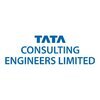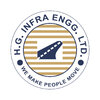
i
Aarvee Associates
Filter interviews by
Aarvee Associates Structural Engineer Interview Questions and Answers
Aarvee Associates Structural Engineer Interview Experiences
1 interview found
I applied via Campus Placement and was interviewed before May 2023. There were 3 interview rounds.
Aptitude+ Technical MCQ test
(5 Questions)
- Q1. BMD and SFD diagram of continuous beam and portal frames.
- Ans.
BMD and SFD diagrams show internal forces in a structure, like bending moment and shear force.
BMD diagram displays variation of bending moment along the length of a beam or frame.
SFD diagram shows variation of shear force along the length of a beam or frame.
In continuous beams, BMD and SFD diagrams help in analyzing internal forces at different supports and sections.
Portal frames have different loading conditions which...
- Q2. Basics of geotechnical engineering
- Q3. Basics of Steel Structure
- Q4. Plastic method of design
- Ans.
Plastic method of design is a structural engineering approach that considers the redistribution of internal forces to achieve a more efficient design.
Plastic method allows for redistribution of internal forces beyond the elastic limit of the material.
It is based on the concept of plastic hinges forming in the structure to dissipate energy.
Design is based on achieving a collapse mechanism that is ductile and predictable...
- Q5. Basics of IS456 RCC
(2 Questions)
- Q1. Tell me about About yourself
- Q2. About Salary details
Interview Preparation Tips
Top trending discussions






Interview questions from similar companies

Interview Questionnaire
1 Question
- Q1. I am a civil engineer, and I want to join your company by heart. It is my dream company, I hope you will take me in your company. I'm very hard-working and focused on my work. Thanks,
Interview Preparation Tips

Site Engineer Interview Questions & Answers
Shapoorji Pallonji Groupposted on 20 Jul 2017
Interview Questionnaire
1 Question
- Q1. He just asked how much will you take?
Interview Preparation Tips
Experience: Nothing much, they are all concerned about money.
Tips: Just tell them as per company standard.

I applied via Walk-in and was interviewed before Apr 2021. There were 3 interview rounds.
(2 Questions)
- Q1. Tell me about yourself.
- Q2. Asked me my work experience and my education.
(1 Question)
- Q1. About My work experince and my education and my knowledge.
(2 Questions)
- Q1. About my work experience and my education and my knowledge.
- Q2. My Interoduction and my
Interview Preparation Tips

Interview Questionnaire
1 Question
- Q1. Job requirements

I applied via Naukri.com and was interviewed in Jan 2021. There were 3 interview rounds.
Interview Questionnaire
2 Questions
- Q1. Precommissioning test of transformers
- Ans.
Precommissioning tests of transformers ensure proper functioning and safety before energizing.
Visual inspection of transformer and its components
Measurement of insulation resistance
Measurement of winding resistance
Verification of transformer ratio and polarity
Verification of oil level and quality
Testing of protective devices
Verification of grounding
Functional testing of cooling system
Verification of nameplate data
- Q2. 11kv & 33kv overhead power line distribution
- Ans.
11kv & 33kv overhead power line distribution
11kv and 33kv are common voltage levels for overhead power lines
Overhead power lines are used to distribute electricity from power stations to consumers
The voltage level determines the distance the power can be transmitted and the size of the conductors needed
Proper insulation and grounding is important for safety
Maintenance and inspection of the lines is necessary to ensure
Interview Preparation Tips

I applied via Walk-in and was interviewed before May 2021. There were 2 interview rounds.

(2 Questions)
- Q1. DAISCUSS ABOUT TECHNICAL ASPECTS OF CIVIL ENGINEERING AND SOFTWARE SKILLS
- Q2. CODAL PROVISION OF CONCRETE AND COMMANDS OF SOFTWARE
- Ans.
CODAL provisions for concrete refer to the guidelines and regulations set by relevant authorities, while commands of software are the specific instructions or functions within a software program.
CODAL provisions for concrete include specifications for mix design, strength requirements, and durability standards.
Commands of software for site engineers may include functions for structural analysis, quantity takeoff, and p...
Interview Preparation Tips

I applied via Referral and was interviewed before Jan 2023. There were 2 interview rounds.
(3 Questions)
- Q1. What is circuit
- Ans.
A circuit is a closed loop or path through which electric current flows.
A circuit consists of a power source, conductors, and a load.
There are two types of circuits: series circuit and parallel circuit.
In a series circuit, the current flows through each component in sequence.
In a parallel circuit, the current splits and flows through multiple paths.
Circuits can be found in various electrical devices and systems, such a...
- Q2. What is motar and define circuit
- Ans.
Mortar is a mixture of cement, sand, and water used in construction. A circuit is a closed loop of electrical components.
Mortar is a binding material used in construction to hold bricks or stones together.
It is made by mixing cement, sand, and water in specific proportions.
Mortar hardens over time and provides strength and stability to the structure.
Circuits are pathways through which electricity flows.
They consist of ...
- Q3. What is ac and dc
- Ans.
AC and DC are two types of electrical current. AC stands for Alternating Current and DC stands for Direct Current.
AC (Alternating Current) is a type of electrical current that periodically changes direction.
DC (Direct Current) is a type of electrical current that flows in only one direction.
AC is commonly used in household electrical systems, while DC is used in batteries and electronic devices.
AC can be easily convert...
Artificial intelligence
Interview Preparation Tips

I appeared for an interview in Jul 2024.
(1 Question)
- Q1. Slump test , cement test , workability test

I appeared for an interview before Jan 2024.
(5 Questions)
- Q1. About the Salary
- Q2. About the Facilities
- Q3. About job facilities
- Q4. About the leave
- Q5. About the security
Aarvee Associates Interview FAQs
Tell us how to improve this page.
Aarvee Associates Interviews By Designations
- Aarvee Associates Assistant Manager Interview Questions
- Aarvee Associates Site Engineer Interview Questions
- Aarvee Associates Field Engineer Interview Questions
- Aarvee Associates Design Engineer Interview Questions
- Aarvee Associates Assistant Bridge Engineer Interview Questions
- Aarvee Associates Accountant Interview Questions
- Aarvee Associates Manager Interview Questions
- Aarvee Associates Civil Engineer-Highway/Roadway Interview Questions
- Show more
Interview Questions for Popular Designations
- Civil Structural Engineer Interview Questions
- Senior Structural Engineer Interview Questions
- Structural Design Engineer Interview Questions
- Junior Structural Engineer Interview Questions
- Senior Structural Design Engineer Interview Questions
- Structural Engineer Trainee Interview Questions
- Civil Structural Designer Interview Questions
- Structural Steel Detailer Interview Questions
- Show more
Aarvee Associates Structural Engineer Interview Process
based on 1 interview
Interview experience
Structural Engineer Interview Questions from Similar Companies
Fast track your campus placements
Aarvee Associates Structural Engineer Reviews and Ratings
based on 2 reviews
Rating in categories
|
Assistant Manager
326
salaries
| ₹3.6 L/yr - ₹11 L/yr |
|
Manager
119
salaries
| ₹6.5 L/yr - ₹19 L/yr |
|
Field Engineer
119
salaries
| ₹1.6 L/yr - ₹4.2 L/yr |
|
Site Engineer
93
salaries
| ₹2.7 L/yr - ₹6.6 L/yr |
|
Civil Engineer
84
salaries
| ₹2.7 L/yr - ₹7.8 L/yr |

L&T Construction

Tata Projects

Shapoorji Pallonji Group

Kalpataru Projects International
- Home >
- Interviews >
- Aarvee Associates Interview Questions >
- Aarvee Associates Structural Engineer Interview Questions













